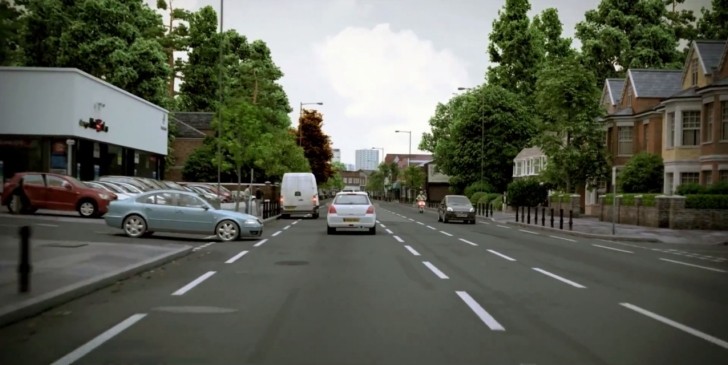The Driver and Vehicle Standards Agency (DVSA) in the UK will start using computer-generated imagery or CGI in the hazard perception tests, thus replacing the old classic video scenes with more accurate digital ones. This is most likely the first move in the direction of creating a life-like platform for these tests, with the future expected to bring an all-digital world model for a better experience and more accurate results.
The current video clips which are used to test the hazard perception and awareness are still good, the DVSA says, but the digitally-modeled environments are better. The current CGI technologies can provide a much better visual experience than what most classic imagery used to date can expect, and the goal is to supply a world that is as realistic as possible.
The DVSA also says that the number of hazards will also be expanded, including vulnerable road users, such as children or cyclists. The whole world will be updated with new vehicles, new types of roads and modern surroundings. Plus, altering the weather or lighting conditions will also be a breeze, so testing can be expanded to night time, bad weather, winter conditions and more.
The hazard perception test run by the DVSA requires the participants to observe the video they are shown and click on what they perceive as being a potential hazard. The test comprises multiple traffic scenarios from which several are most likely to lead to an accident in the real life and provides accurate info on the newly-licensed road users’ capability to spot danger.
A wider range of hazards will be included in the testing process
Staging the immense number of scenarios which could occur on the road is an operation which requires a lot of logistic and financial efforts. Conversely, the digital environment can be easily altered and there is absolutely no limit to the variations each scenario can receive. Factoring this and the high quality of the videos will result in an experience which is closer to how the real-life traffic is.The DVSA also says that the number of hazards will also be expanded, including vulnerable road users, such as children or cyclists. The whole world will be updated with new vehicles, new types of roads and modern surroundings. Plus, altering the weather or lighting conditions will also be a breeze, so testing can be expanded to night time, bad weather, winter conditions and more.
“Research has shown how effective the hazard perception test is in reducing the number of crashes involving newly qualified drivers”
These are the very words of Alastair Peoples, DVSA chief executive told visordown. He acknowledges the importance of the theoretical education, but stresses out that people who score high in the hazard perception test have been proven less prone to being involved in a crash.The hazard perception test run by the DVSA requires the participants to observe the video they are shown and click on what they perceive as being a potential hazard. The test comprises multiple traffic scenarios from which several are most likely to lead to an accident in the real life and provides accurate info on the newly-licensed road users’ capability to spot danger.

